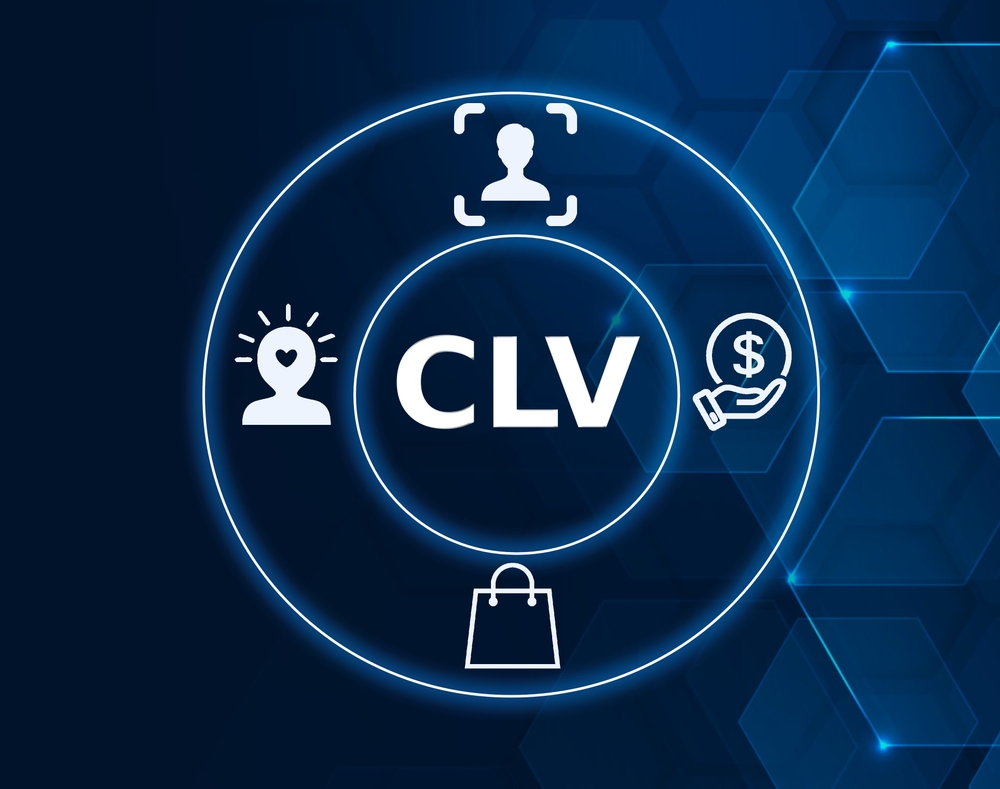Are you looking to improve your SaaS business? Paying attention to the right metrics can unlock its true potential. In this article, we’ll cover essential SaaS metrics that can guide you in assessing financial health, driving growth, and ensuring customer satisfaction.
Key Insights
- Learn how vital SaaS metrics can shape your business’s performance and heighten customer satisfaction.
- Explore how analyzing data can reveal growth opportunities, set benchmarks, and fine-tune strategies for success.
- Discover how tools like cohort analysis and regular metric reviews can lead to informed decisions, pushing your business ahead.
Essential Metrics in the SaaS Landscape
In the competitive world of SaaS, tracking the right metrics is crucial. Focus on revenue, customer, and sales and marketing metrics. They’ll give you deep insights into your financial state, customer behavior, and strategies for customer acquisition and revenue growth.
Focusing on specifics like annual contract value is essential for steady progress. Let’s dive into these key metric categories and understand their role in your business’s success.
Revenue Metrics: The Financial Pulse
Revenue metrics are vital for gauging a SaaS business’s financial health and growth. Key metrics include:
- Monthly Recurring Revenue (MRR): Shows your monthly revenue from customers, reflecting your business’s success.
- Annual Recurring Revenue (ARR): Predicts yearly recurring revenue, offering a broader financial perspective.
- Average Customer Revenue: Reflects the average revenue from each customer.
These metrics offer insights into your financial performance, guiding your growth strategies. For a full picture, consider tracking:
- SaaS Quick Ratio
- Average Quick Ratio
- LTV:CAC ratio
- Total Contract Value (TCV)
- Recognized Revenue
- Burn Rate
- Gross Margin
- ARPA
- Expansion Revenue
- ARR
- ASP
- Revenue Churn
- Gross Margin Adjusted Payback Period
- Burn Multiple
These provide a comprehensive view of your revenue, including customer averages, aiding in informed decision-making.
Customer Metrics: Understanding Your Audience
Customer metrics like churn rate and Customer Lifetime Value (LTV) offer critical insights into customer behavior, enabling you to:
- Improve customer retention and growth.
- Fine-tune your annual contract value.
- Gauge the total revenue from an average customer over their lifetime.
LTV is a powerful indicator for maximizing customer retention and loyalty. The Customer Monthly Growth Rate (CMGR) shows how fast you’re adding new customers, indicating growth potential. A lower CMGR might signal challenges in customer acquisition.
Tracking customer concentration gives insight into the risk associated with your customer base. It involves calculating the revenue percentage from your top customers, a valuable metric for evaluating business success.
Sales and Marketing Metrics: Strategies for Growth
Sales and marketing metrics like Customer Acquisition Cost (CAC) and lead conversion rates are crucial for refining customer acquisition and revenue strategies. CAC clarifies the cost of acquiring new customers and their value to your business. The CAC-to-LTV ratio is an insightful measure of customer acquisition success.
Upselling and cross-selling can significantly increase customer LTV, contributing to higher revenue. By leveraging product features to reduce churn, you ensure the product remains valuable to customers. Referral programs with incentives like discounts or free subscriptions can reduce churn and acquire new customers cost-effectively.
Analyzing SaaS Metrics for Business Growth
In this part, we delve into how thorough analysis of SaaS metrics can fuel your business growth. We’ll discuss benchmarking performance, spotting trends and patterns, and aligning metrics with your business goals to drive success.
Benchmarking Performance
Benchmarking is about comparing your metrics with industry standards or historical data. It’s a crucial step to understand where you stand in areas like customer acquisition costs, lifetime value, churn rate, and MRR growth. This comparison gives you insights into your performance and areas for improvement. It helps you set ambitious goals and make informed decisions, keeping you competitive.
Identifying Trends and Patterns
Understanding the ebb and flow of your business through metrics is vital. Seasonal changes, for example, can greatly influence user demand and revenue. By analyzing trends and patterns using statistical techniques, you can uncover valuable insights, detect significant patterns, and spot trends in your data. This understanding can guide you in optimizing your strategies for better growth and performance.
Aligning Metrics with Business Goals
Aligning your SaaS metrics with your business objectives is crucial. It turns your strategy into actionable steps, ensuring all efforts are directed towards your desired outcomes. Identify the key metrics that drive your business and keep a regular tab on them. This helps in making data-driven decisions, fine-tuning your strategies, and achieving your goals.
Optimizing SaaS Metrics for Customer Retention and Expansion
Next, we focus on strategies for reducing churn and expanding customer base through upselling, cross-selling, and referral programs. Implementing these tactics not only enhances customer loyalty but also boosts revenue growth, securing the future of your SaaS business.
Reducing Churn
Churn reduction is critical for growth. To keep customers, consider improving your product, providing top-notch customer support, or offering incentives. Focus on making your product indispensable to customers and maintaining strong relationships to minimize churn.
Upselling and Cross-selling
Upselling and cross-selling can significantly raise customer LTV and revenue. Understand your customers’ needs, segment them appropriately, and use customer feedback to find upselling and cross-selling opportunities. Thoughtful product placement and incentives can encourage customers to upgrade or add products.
Implementing Referral Programs
Referral programs can effectively acquire new customers and build loyalty. They lower customer acquisition costs and strengthen customer relationships. Offering discounts, special deals, or loyalty programs as part of referrals can be particularly effective in SaaS businesses.
SaaS Metrics for Customer Success
Measuring customer success metrics like Net Promoter Score (NPS), Customer Satisfaction Score (CSAT), and user engagement is key for ensuring satisfaction and loyalty. Let’s see how these metrics contribute to your business’s success.
Net Promoter Score (NPS)
NPS measures customer loyalty and satisfaction. A high NPS indicates that customers are likely to recommend your product, while a low NPS shows dissatisfaction. Regularly tracking and responding to NPS feedback can significantly impact your growth and customer satisfaction.
Customer Satisfaction Score (CSAT)
CSAT helps you gauge immediate customer satisfaction. By tracking CSAT and analyzing feedback, you can pinpoint improvement areas and make changes to enhance customer experience.
User Engagement Metrics
Metrics like Daily Active Users (DAU) and Monthly Active Users (MAU) offer insights into how engaged your customers are with your product. Monitoring these can help you understand customer behavior, identify potential churn risks, and shape your product strategies.
Effective SaaS Metric Reporting and Analysis
Effective reporting and analysis of SaaS metrics are essential for informed decision-making and business growth. We’ll explore the importance of data visualization tools, cohort analysis, and regular metric reviews.
Data Visualization Tools
Tools like Google Charts, Tableau, and Grafana transform complex data into easy-to-understand visual formats. They help you grasp your business’s performance and make informed decisions.
Cohort Analysis
Cohort analysis groups users based on common characteristics and tracks their behavior over time. It’s a powerful tool for understanding customer behavior and optimizing acquisition and retention strategies.
Regular Metric Reviews
Regularly reviewing your metrics keeps your business aligned with its goals. It helps you stay updated on performance, identify issues, and assess the impact of your initiatives. Sharing these insights with your team fosters a data-driven culture, essential for growth.
Summary
To ensure the success and growth of your SaaS business, it’s crucial to track and analyze the right metrics. Concentrating on significant metrics in revenue, customer, and sales categories enables you to make informed decisions and optimize your strategies for better outcomes. Remember, the key to staying ahead is continuous monitoring, learning, and adapting. Use SaaS metrics as a tool to realize your business’s full potential.
Frequently Asked Questions
What is saas metrics?
SaaS metrics are powerful performance and growth benchmarks that help companies gauge their success and develop a solid strategy for the future. By measuring KPIs, organizations can analyze their data and make adjustments to achieve stability and growth.
What are the key SaaS metrics that businesses should track to stay competitive?
Tracking key SaaS metrics such as MRR, ARR, churn rate, LTV, CAC, and lead conversion rates is essential for staying competitive in today’s market.
How can I reduce customer churn in my SaaS business?
Focus on improving your product, providing better customer support, and offering incentives or discounts to keep customers engaged – that’s the best way to reduce customer churn in your SaaS business.
Which data visualization tools can I use to better understand and communicate my SaaS metrics?
You can use popular tools such as Google Charts, Tableau, Grafana, Chartist, FusionCharts, Datawrapper, and Infogram to better understand and communicate your SaaS metrics.
How often should I review my SaaS metrics to ensure I’m making informed decisions?
Review your SaaS metrics on a monthly or quarterly basis to make sure you have the most current information to inform your decisions.



